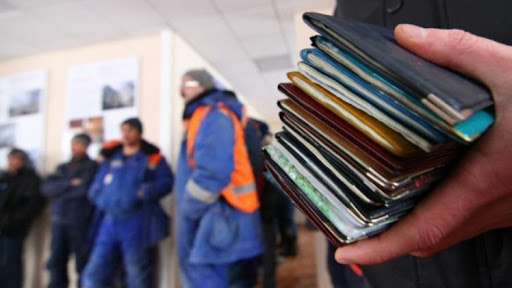russia Is Legalizing Labor Slavery
10/11/2025

The number of Indian citizens coming to the rf for employment has increased 22-fold over the past five years. While in 2020 only 813 entries for work purposes were registered, in 2025 their number has exceeded 17,700. This trend is explained by an acute labor shortage, especially in construction, industry, and agriculture. The rf’s agro-industrial complex alone loses about 150,000 workers every year.
After restrictions had been imposed on migrants from CIS countries, moscow shifted its focus to South Asia. In 2025, the number of Indian migrant workers may double compared to the previous year. They have been allocated 71,800 quotas out of a total of 234,900 for foreign specialists.
At the same time, russian businesses are considering the possibility of attracting workers from Nepal, Vietnam, and Bangladesh. For companies in construction, retail, and services, this is a way to compensate for staff shortages. However, behind the facade of the official policy there lies a different reality: legalized labor slavery.
A telling example is the situation with North Korean citizens. Thousands of them enter the rf under the guise of students who are supposedly doing internships, but in fact work in inhumane conditions. This directly violates UN sanctions, which russia itself has signed. Koreans work six days a week, sometimes up to 20 hours a day, and their wages are divided between the DPRK authorities and russian companies.
In parallel, the authorities are trying to tap into internal reserves. The government has resumed indexing pensions for working pensioners and simplified the hiring of minors. However, as governor of the Central Bank Elvira Nabiullina has pointed out, even with the easing of tensions in the labor market, the labor shortage will remain due to “serious structural changes” in the economy.
Against this background, regions continue to pursue anti-migration policies. In Novosibirsk region, migrants have been banned from working in canteens, sports facilities, and the freight transport sector. Previously, restrictions were already in place on foreigners working in preschool education, taxis, and the sale of alcohol and tobacco. In addition, the ministry of internal affairs has begun collecting data on migrant children who have not been enrolled in schools, in particular due to failing language tests.
Thus, russia has found itself in a paradoxical situation: on the one hand, the country is critically dependent on foreign labor, and on the other – it is creating conditions that increasingly resemble systemic labor slavery.
